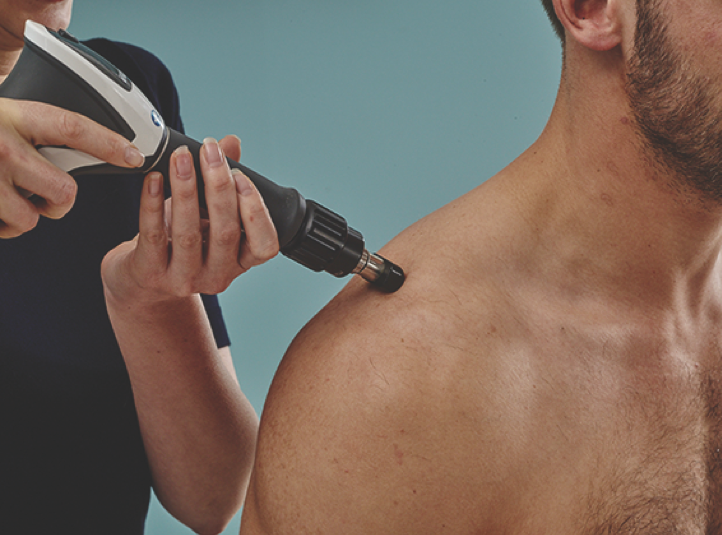Shockwave therapy is a treatment method in which an applicator is used to direct radial ‘shockwaves’ on the part of the body to be treated. Lots of scientific research has been conducted into shockwave therapy over recent years. An analysis of the published research provides plenty of evidence to substantiate the advantages of shockwave therapy, and shows that there are lots of patients who benefit from the treatment.
How does shockwave therapy work?
Once the physiotherapist has determined where the complaint originates, and that shockwave therapy is the correct treatment method to be used, some gel is applied to the painful area. Then the Shockwave device is used. The handpiece contains a fast-moving projectile controlled by a compressor. This projectile transmits energy to the applicator to generate the radial shockwaves, which then spread through and are absorbed by the body. The frequency and pressure of the waves can be adjusted.

The shockwaves reduce pain partly through the creation of substance P and the hyperstimulation of pain sensors. The body itself regenerates the affected tissues, resulting in the following effects:
- Improved blood flow and neovascularisation
- Increased growth factors
- More mesenchymal stem cells
- Stimulation of the metabolism
Shockwave therapy can also reduce calcification and fibrosis. The technique used in shockwave therapy comes from kidney stone pulverizers. The treatment is short-term, but patients may experience some sensitivity. The advantage is that treatment only lasts for around 8 to 10 minutes. Shockwave therapy is always combined with training, manual therapy or other physiotherapy techniques during treatment in the practice, and/or exercises that the patient is given to do at home.
Which complaints is shockwave therapy successfully applied for?
It is a good technique for a range of complaints. We divide the complaints into five categories:
-
Tendons
- The most common tendon complaints that can be treated are painful Achilles tendons, patellar tendons, supraspinatus and lateral (tennis) elbow.
-
Bones
- The most common bone pathologies are medial tibial stress syndrome (shin splints) and greater trochanteric pain syndrome.
-
Neurological disorders
- It is generally accepted that radial shockwave therapy is successful for muscle treatment of spasticity, both in adults with hemiplegia and children with cerebral palsy.
-
Muscles
- Treatment of trigger points, muscle pain and muscle hypertonia.
-
Connective tissue
- Known applications for shockwave therapy are plantar fasciopathy, trigger finger and scar tissue.

